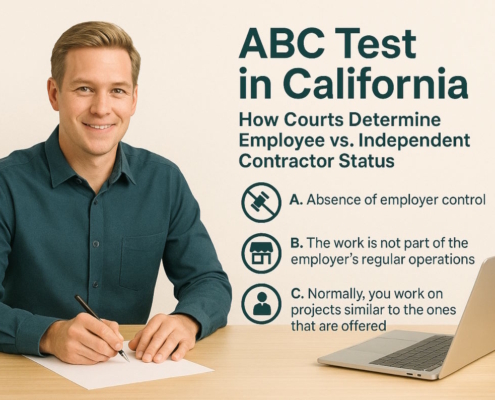2. Understand Unpaid vs. Paid Time Off
While companies do not legally have to provide vacation for employees, they may still be required to provide family leave under the Family and Medical Leave Act. How do you know if your company qualifies? FMLA applies to public agencies, schools, and workplaces with 50 or more employees.
You may wonder what happens if your job doesn’t offer paid vacation time or you already used what was available to you. Technically, you can still ask for time off, but it most likely won’t be paid. A manager might be willing to agree to give unpaid time off.
If illness or family issues mean that you need time off, and you don’t have any paid leave to spare, it is possible to ask for a leave of absence or family and medical leave.
How to Ask for Time Off
3. Ask Your Boss at an Appropriate Time
If there’s a crisis at work or it’s particularly busy, it might not be the best time to ask a manager for time off. By avoiding making requests during stressful periods at work, an employee is more likely to have paid vacation time approved.
Similarly, it is important to give as much notice as possible. You can either ask your boss in person or email your request. However, if you work in a more formal setting, it might best to schedule a short meeting with your boss.
- Example: Elise works at Home Depot. During Memorial Day weekend, the store is swamped. Two days before the holiday, Elise goes to her manager and says, “Hey, I’d like to take the weekend off to spend time with my kids.” This is an example of what not to do. Elise has given her employer very little notice during a busy period at work. It is highly unlikely she will be approved for vacation.
4. Be Aware of Busy Periods
Similar to the point above, some periods at a workplace are particularly hectic, and a manager may need all hands on deck. For instance, at some retail jobs, the Christmas period is very busy. Therefore, it might not be best to schedule a vacation around that time. Also, if you have a big project due on October 15, then you shouldn’t plan a trip in the weeks leading up to that deadline.
5. Explain Your Reasons
Especially if an employee wants to take vacation at a workplace’s busy time of year, it is best for he or she to provide context for his or her employer. For example, if you are taking paid time off to go to your child’s graduation across the country, you could give that context. Your employer is more likely to understand and grant the request for time off.
6. Plan Ahead of Time
If an employee wants to take vacation leave, it is good practice to manage time at work accordingly. For instance, projects should be done on time and a plan put in place to complete those that are due while you will be absent. Being ahead at work makes it more likely that your boss will approve vacation leave. This especially applies around the holiday season.
7. Make a Request in Writing
To avoid any future confusion or misunderstanding, it is important that an employee puts a vacation request in writing. An email is normally enough.
8. Receive Permission Before Making Plans
While it might be tempting to book that discounted plane ticket to Fiji, an employee should get approval from his or her supervisor prior to making vacation plans.
- Example A: Jenna tells her boss, “Hey, I’m going to Paris for a week in August. Just letting you know.” This is problematic because Jenna made plans without first getting approval.
- Example B: Frank tells his boss, “Hey, I’d like to visit my folks in Maine for a week in June. Do you think that could work?” This is totally fine because Frank is checking with his boss before making plans.
9. Plan For Your Absence
While you are on vacation, your boss is down one employee. Therefore, it is good practice to plan how your share of work will get done while you are gone.
- Example: Sophie would like to go on vacation to France. When asking her boss for permission, she assures him that her coworker has agreed to cover her shift while she is away.
10. Make Sure You Are Caught Up at Work
Prior to going away on vacation, it is important for an employee to be caught up. All projects and responsibilities should be finished or under control. Nothing should be behind schedule at the time of vacation.
11. Be Considerate of Coworkers
Certain times of year are popular for taking vacations. To be fair to coworkers, it is good practice to discuss ways of sharing popular periods. That way, everyone is happy, and the employer does not have the stress of sorting out conflict.
New Hires
While it may be difficult to get time off as a new employee, it is not impossible. If a new employee, upon the time of hiring, has already booked a vacation, he or she may be able to negotiate with the new employer.























